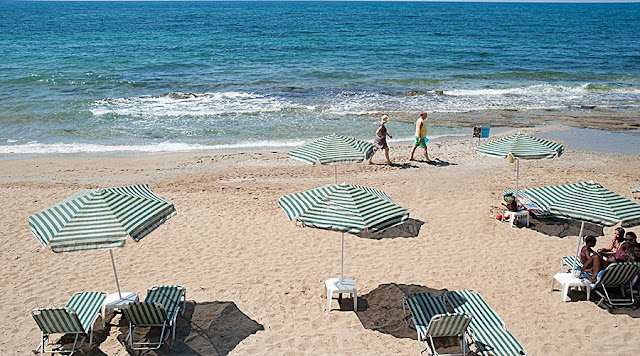Gramvousa Islet
Gramvousa is famous for its historical Venetian fortress, which still stands at a height of 137m, over the beach. The fort had also been used by pirates; one legend tells that there is a great treasure buried in the island.
On the south side of the island there are two large bays, with the wreck being being between them. The west bay (below the castle) hosts hundreds of visitors daily, arriving here with excursion boats. The boats run from Kissamos (1 hour trip) and stop here before continuing their journey to the magnificent beach of Balos.
The visitors wander around the area, visit the castle and the wreck. They can also swim in the crystal waters of the western cove, near the church of the Holy Apostles. The beach with the fantastic turquoise color, has white sand and rocks in places. Some tamarisk trees are near the beach, offering natural shade. The seabed of the area is ideal for a snorkeling. You can get food and water from the bar of the excursion boats. No other amenities are offered in the area, because it is protected under Natura 2000 program and staying overnight is not allowed.
ENVIRONMENT AND AGRIA GRAMVOUSA
The landscape in Imeri Gramvousa is totally virgin and the view to Balos is exciting. On the island, the visitor comes across innumerable wild plants, in a landscape reminiscent of Africa.
The wider Gramvousa region and the lagoon of Balos is one of the most important protected areas in the Eastern Mediterranean. The Cape and the islets of Gramvousa host more than 100 species of birds and 400 species of flora. The Mediterranean seal (Monachus monachus) breeds in the local caves and the endangered sea turtle (Caretta caretta) seeks its food in the area.
Agria Gramvousa is located north of the Cape of Gramvousa and access to the islet is very difficult, because of the high rocks surrounding the island. The inhospitable island protected under Natura’s program. The area hosts gulls and various bird species.















Σχόλια
Δημοσίευση σχολίου